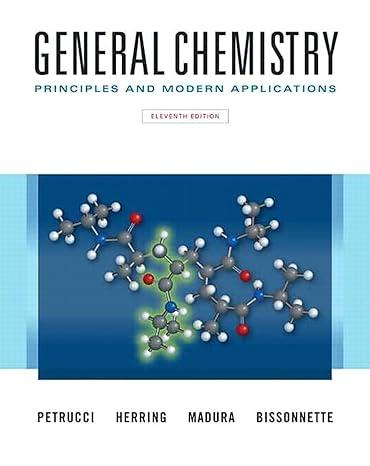Reaction (18.10), described in the Integrative Example, is called a carbonate transposition. In such a reaction, anions
Question:
Reaction (18.10), described in the Integrative Example, is called a carbonate transposition. In such a reaction, anions of a slightly soluble compound (for example, hydroxides and sulfates) are obtained in a sufficient concentration in aqueous solution that they can be identified by qualitative analysis tests. Suppose that 3 M Na2CO3 is used and that an anion concentration of 0.050 M is sufficient for its detection. Predict whether carbonate transposition will be effective for detecting
(a) SO42- from BaSO4(s);
(b) Cl- from AgCl(s);
(c) F- from MgF2(s).
Integrative Example
Lime (quicklime), CaO, is obtained from the high-temperature decomposition of limestone (CaCO3). Quicklime is the cheapest source of basic substances, but it is water insoluble. It does react with water, however, producing Ca(OH)2 (slaked lime). Unfortunately, Ca(OH)2(s) has limited solubility in water.
![]()
When Ca(OH)2(s) reacts with a soluble carbonate, such as Na2CO3(aq), however, a greater amount of Ca(OH)2(s) dissolves and the solution produced has a much higher pH. Equilibrium is displaced to the right in reaction (18.10) because CaCO3 is much less soluble than Ca(OH)2.
![]()
Step by Step Answer:

General Chemistry Principles And Modern Applications
ISBN: 9780132931281
11th Edition
Authors: Ralph Petrucci, Jeffry Madura, F. Herring, Carey Bissonnette





